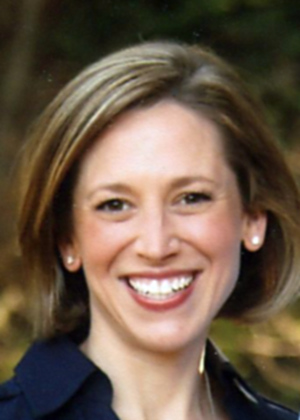www.acsprf.org
Dr. Katharine W. Huntington
 Assistant Professor
Assistant Professor
Department of Earth and Space Sciences
University of Washington
Grant 49704-DNI2
The Use of Carbonate 'Clumped Isotope' Thermometry to Quantify Temperatures of Burial and Diagenesis from 0-200C
Dr. Katharine Huntington studies the interactions of tectonics, erosion and climate, and how the evolution of Earth’s surface and shallow crust both reflect and record these interactions. Her recent work at the University of Washington uses geochemistry to understand how faults in the shallow crust impact the movement of fluids (e.g., water and hydrocarbons) in sedimentary basins.
Faults are discontinuities or fractures that displace rocks, and shallow faults produce zones of crushed up rock that can act either as permeable pipelines to channel fluids or as impermeable blocks to prohibit the flow of fluids. Fluids traveling along fault zones and through permeable rocks nearby can precipitate minerals like quartz or calcite, called cements, which record a snapshot of information about the fluids from which they form.
Dr. Huntington’s ACS PRF project investigates how the geochemistry of calcite cements in fault zones can tell us about the interactions of faults and fluids in the past. Specifically, her work applies a new geochemical tool called “clumped isotope” thermometry to calcite cements along the Moab fault in the Paradox Basin, a well-known, productive basin in Utah. Calcite contains both carbon and oxygen, and the tendency of the rare isotopes carbon-13 and oxygen-18 to bond, or “clump,” together in the mineral is temperature dependent; by analyzing the “clumping” in calcite cements, Dr. Huntington’s team can determine the temperature and composition of the fluid from which the mineral grew.
The clumped isotope thermometer came out of a lab at the California Institute of Technology several years ago, where Dr. Huntington analyzed different generations of calcite cements from lake sediments that had been buried under a lava flow 7 million years ago. In a single sample, earlier generations recorded the cool temperatures of lake water at the earth’s surface; later generations recorded temperatures of hot fluids moving in the sub-surface when the sample was buried under lava. These results gave her the idea of using clumped isotopes to study fluids in fault zones.
The Moab Fault is a great natural laboratory to try out the approach. Previous studies of the area suggested that calcite cements in the region formed from fluids circulating deep below the surface, which would have been the same temperature as the surrounding rocks or hotter (>175°F). In their research, Dr. Huntington and her team did find cements formed from hot fluids. However, they also found that in some places near large fracture zones, calcites very deep in the sub-surface were formed from cool fluids (precipitation) that penetrated down from above. Both the cool and hot cements formed very deep in the sub-surface, showing fluids from heterogeneous sources flowed through the same fault zone.
The discovery of such heterogeneity in this fault zone was surprising because it could not be seen in previous studies that used conventional geochemical tools. The use of clumped isotope thermometry made this discovery possible, and the resulting temperatures make a lot of sense when compared to fault characteristics in this area: The cool fluids were restricted to large, permeable fault zones; while these zones acted as pipelines for fluids to penetrate rapidly from the surface, impermeable faults blocked their movement, showing how the geologic structure of an area affects the fluid movement.
“Anything we can do to help understand from a process point of view how fault deformation impacts fluid flow could help us predict where to find and efficiently extract hydrocarbons based on what we know about an area’s geologic structure.”
Moving forward, Dr. Huntington plans to continue calibration work with high-temperature calcite samples to improve precision of the clumped isotope thermometry tool at higher temperatures. She plans to return to the Moab Fault to conduct additional testing, as well as extrapolate what she has learned to other fault zones and basins in other areas of the world.
Dr. Huntington received a two-year Doctorial New Investigator grant with a one-year extension from ACS PRF supporting her Moab Fault research. “It absolutely made these discoveries possible.” ACS PRF provided funding for one graduate student, field work for three students and herself, lab analyses, and an extension project investigating the interactions of fractures and fluid flow through time in the Guadalupe Mountains, Texas.
“The ACS PRF funding let me take a risk and try something new and different that has been really productive. It’s something that I’m really excited about moving forward.”
